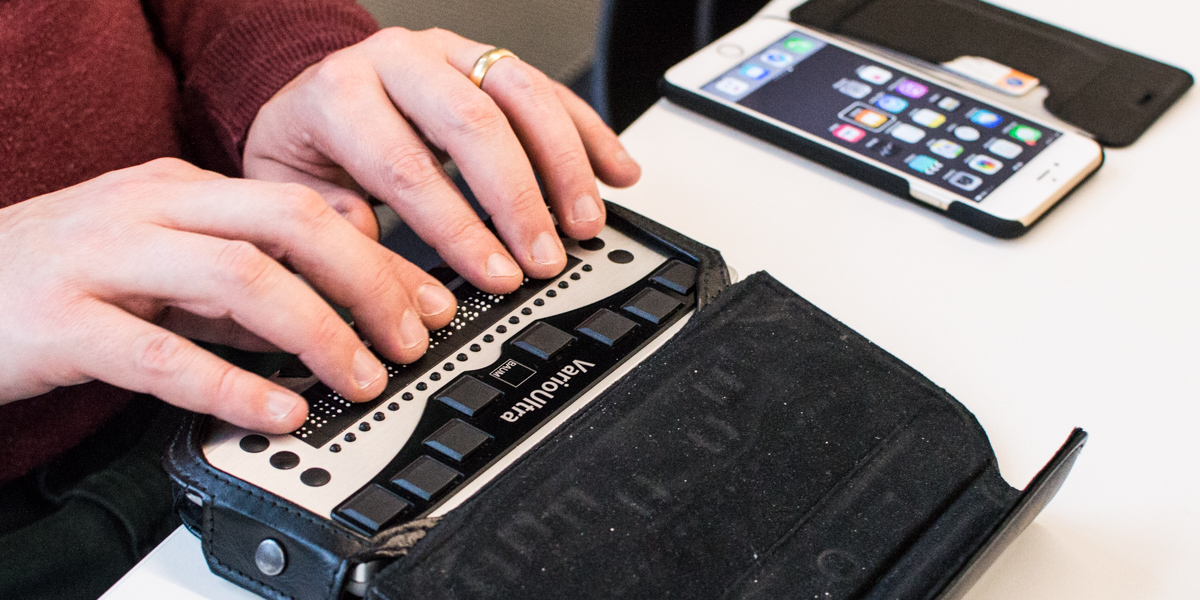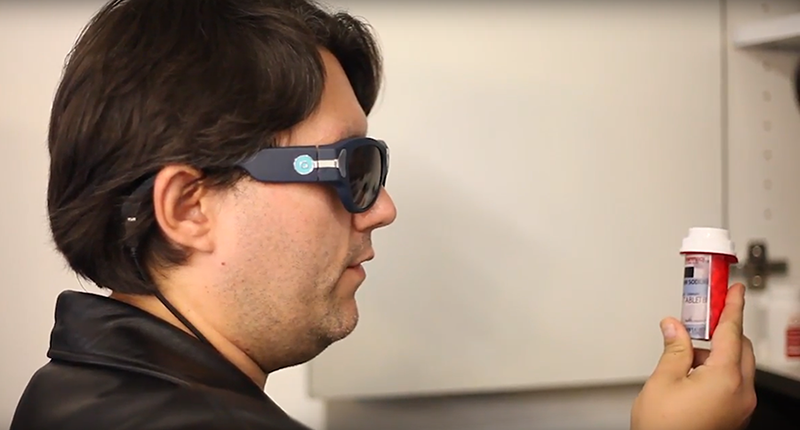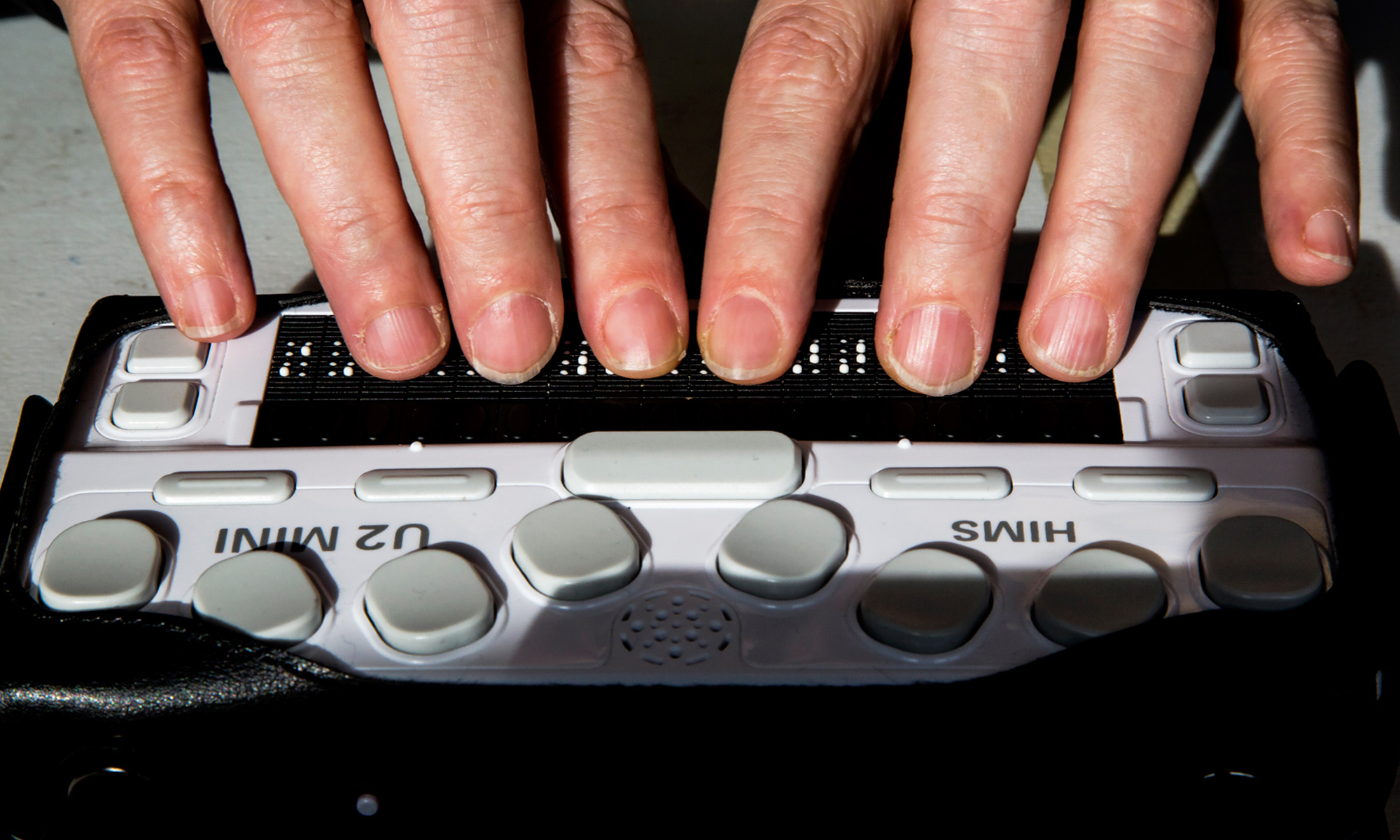Empowering Freedom With Assistive Technology for the Blind
The combination of assistive modern technology right into the lives of people with aesthetic problems stands for a substantial improvement in advertising self-reliance and self-sufficiency. From ingenious screen visitors to sophisticated smart canes, these devices not just boost everyday navigating and communication however likewise empower users to involve meaningfully in various facets of life. As we check out the myriad benefits and real-world applications of these technologies, it becomes critical to examine the hidden factors that add to their effectiveness and the potential for future developments in this important area.
Review of Assistive Modern Technology

The growth of assistive modern technology is grounded in concepts of inclusivity and empowerment. Developments in software program, equipment, and sensory improvements give users with options customized to their certain requirements. From display visitors that transform text to speech, to tactile devices that communicate information through touch, these devices transform the means individuals engage with their surroundings.
In enhancement to sensible applications, assistive innovation cultivates better social incorporation and engagement in numerous sectors, including education and work (Screen readers for the blind). As r & d remain to progress, the potential for assistive technology to further improve the lives of visually impaired people continues to be encouraging, paving the method for an extra equitable culture where every person can thrive
Kinds Of Assistive Devices
A variety of assistive devices have actually emerged to support people with visual impairments, each developed to fulfill certain demands and improve everyday performance. These tools vary from low-tech services to state-of-the-art innovations, offering diverse alternatives for customers.
Low-tech devices include magnifiers and large-print products that assist in analysis and writing. Braille tools, such as Braille stylus pens and slates, enable responsive analysis and communication. Orientation and wheelchair help, like white walking sticks, help individuals browse their setting securely.
On the greater end of the range, digital magnifying systems and display viewers offer substantial support. Electronic magnifiers allow customers to expand message and images on screens, while screen readers transform electronic content right into manufactured speech, promoting accessibility to information on computers and smartphones.
Smartphone applications additionally play an important duty, giving features like message recognition and navigation assistance. Wearable technology, such as smart glasses furnished with increased truth, is emerging as an appealing tool to boost situational recognition.
Benefits of Assistive Technology
The combination of assistive technology considerably enhances the top quality of life for people with aesthetic impairments. These modern technologies encourage users by advertising freedom, allowing them to navigate their atmospheres much more effectively and perform day-to-day jobs with higher ease. Screen readers and magnifying software permit people to accessibility electronic details, cultivating specialist and academic possibilities that may have formerly been out of reach.
Moreover, assistive devices such as wise walking sticks and GPS applications supply real-time navigation help, improving mobility and safety and security. This boosted freedom not just improves self-confidence yet also encourages social interaction, permitting users to take part more totally in their neighborhoods.
Assistive modern technology likewise helps with communication, aiding individuals attach with others via voice acknowledgment and text-to-speech applications. This capability is crucial for maintaining connections and accessing vital information.
In addition, the modification options available with lots of assistive modern technologies ensure that customers can tailor tools to their particular needs, additionally improving usability and efficiency. Overall, the benefits of assistive modern technology for individuals with aesthetic impairments are extensive, promoting a more comprehensive society where everybody can seek their desires Get More Info and goals.
Situation Studies and Success Stories
Highlighting the transformative effect of assistive modern technology, many study highlight how individuals with visual disabilities have successfully integrated these devices right into their lives. One engaging example includes an university student who utilized screen analysis software application to navigate on the internet sources and academic materials effectively. This innovation not just promoted her education but likewise improved her confidence in joining discussions and group jobs.
One more study features a professional that employs a mobile phone application made for navigation and item acknowledgment. By utilizing this app, he has actually gained back autonomy in both his individual and work atmospheres, permitting him to commute separately and involve with coworkers extra efficiently.
Furthermore, a senior citizen shared her experience with braille e-readers, which enabled her to access a huge array of literary works and stay connected with her area via publication clubs.
These success tales highlight the important role of assistive technology in promoting freedom, improving top quality of life, and advertising social assimilation for individuals with visual problems (OCR devices for the blind). By accepting these ingenious tools, individuals can get rid of difficulties and take possibilities that add to their individual and expert gratification

Future Trends in Assistive Technology
Innovation in assistive technology is poised to redefine the landscape of support for people with aesthetic impairments. Emerging fads stress the combination of artificial intelligence (AI) and artificial intelligence, which enhance the performance of devices that assist with navigating and details ease of access. As an example, AI-driven applications are now with the ability of analyzing aesthetic information in real-time, making it possible for individuals to involve with their atmosphere extra individually.
Additionally, the advancement of wearable modern technology is advancing quickly. Smart glasses geared up with augmented fact (AR) can provide audio descriptions of surroundings, changing exactly how users connect with public rooms. These tools not only advertise autonomy however also foster social incorporation.
In Addition, the Internet of Points (IoT) is making homes smarter, permitting seamless connectivity between assistive tools and day-to-day devices. This connection equips users by enabling automated responses and voice-activated controls tailored to private needs.
Verdict
To conclude, assistive technology plays a pivotal role in equipping people with aesthetic disabilities by improving their independence and interaction with their environments. The varied series of devices and applications available not only facilitates navigation and interaction yet additionally advertises social integration and possibilities for individual and specialist development. As innovations proceed in this area, the possibility for enhancing the quality of life for those with pediatric eye care aesthetic problems will certainly expand, fostering better autonomy and empowerment.
